The Area
Unspoiled forests, clean beaches, thermal springs, waterfalls and a huge olive grove are just some of the elements that make up the region.
Unspoiled forests, clean beaches, thermal springs, waterfalls and a huge olive grove are just some of the elements that make up the region.
Rovies are built in the arrow made by the two piney mountains Telethrio and Kavallaris, in a huge olive grove, which joins the foot of the mountain with the sea.
Without a doubt, the historical land called Oroviae, is referred by Stravona, in relation to the always-true oracle of Selinoudios Apollon, in the place “ Taxiarhis”, near the monastery of Saint Irene Chrissovalladou. Regarding to the origin of her name, some researchers attribute it to orovos (rovi), a plant which thrived in her lands and was suitable for the nutrition of bovine animals, while others attribute it to onokentavros, which is a Kentavros with the head of a donkey, Orova.
The region, which has been inhabited without a pause since the Neolithic years, suffered a blow in 427 B.C. by a tidal wave created by a strong earthquake and its habitants moved to the surrounding area.
Particular significance acquired Rovies in Byzantine times and in venetian period as evidenced by the tower that stands to this day, in the center of the settlement. When in 1470 the Evoia was conquered by the Turks, Rovies will maintain their military and administrative significance, as the conquerors would establish it as the capital of the municipality (Nahiyie y Roviez) region.
In 1832, Rovies and the surrounding area were sold by their Turkish owner to Apostolos Doumas, while in 1836 they became part of the newly established municipality of Aegeon, having as its capital Limni. They remained part of it until 1912.Then, after the abolition of the municipality of Aegeon, Rovies will become a separate community, with other settlements coming under it, like Kalamoudi, Marouli, Koulouros, Paliochori, Damia, Drymona, Agiannakos, Mandanika (Daphne).
In 1997, they will be part anew of the Kapodistrian municipality of Elymnia as a municipal compartment.
According to the 2001 census, its population amounts to 1,155 inhabitants.
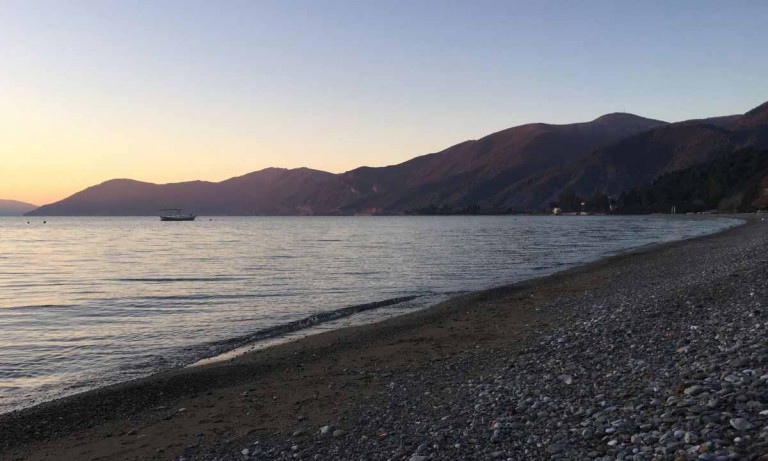
Just a few kilometers from Rovies along the seaside road you will find a very picturesque small town. Limni which is built amphitheatrical in a sheltered bay is in full harmony with the landscape and the lush beautiful beaches that surround it. Walking through the cobbled streets you will see neat houses smothered in bougainvillea and traditional captain mansions that testify the seamanship of its inhabitants. All roads lead to the coastal street and the small port, a meeting point for locals and visitors to stroll, enjoy their coffee, local raki and fresh seafood by the peaceful sea overlooking the northern Evian.
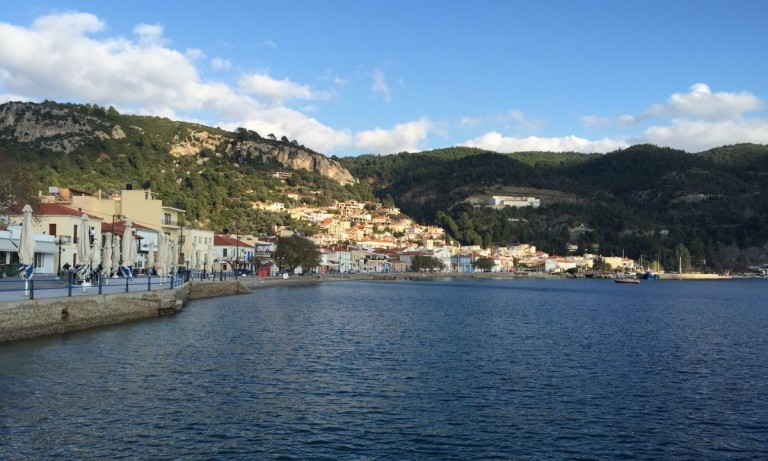
Aidypsos is located about 20 km north of Rovies. The main reason for visiting, is the famous thermal springs that can offer you real relaxation and therapy.
During the ancient years it was a famous destination for both young and old people who used to bath in the healing waters – the younger ones in order to strengthen their bodies and the older ones to find comfort from various diseases. When the Roman general Sulla visited the area, he built thermae, in order to have comfortable baths anytime he visited it. Ruins of the thermae remain till today.
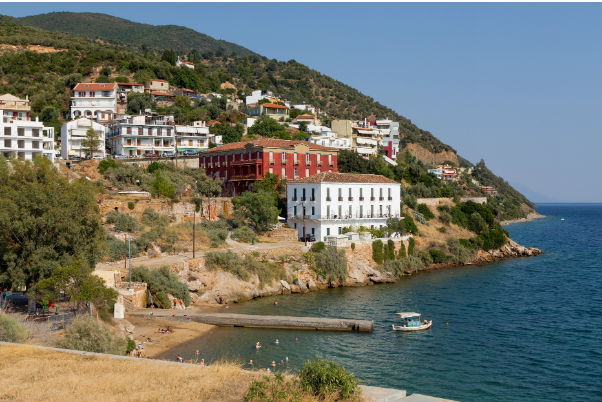
In Rovies you have too many choices to go swimming, as the area is full of beautiful and quiet beaches and small picturesque bays. All common feature clear water!
You may try beach Heracli (Hercules), a beautiful beach with fine gravel, beautifully clear blue waters and pine trees that reach the edge of the sea. Since the entire coastline along the Olive Grove is accessible, you will find several small, quiet beaches: Ai Apostle, Kamares, Potami, Etem, Kamini and Ampouria.
The beach “Kohili” (shell) is one of the most frequented and organized (umbrellas, bar) beaches, with very clean sand, ideal for sea sports, situated between Rovies and Limni. You can also visit the beaches of Spiada in the same area.
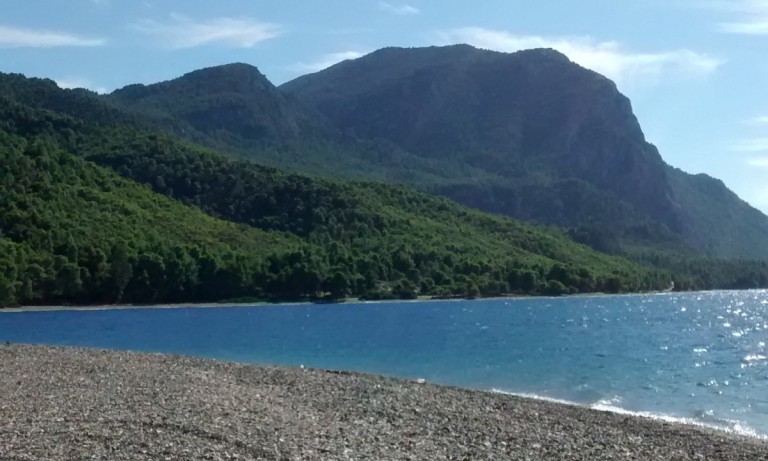
In 620 meters altitude, between Kerasia village and Drymonas village, lays a paradise on earth. A lush landscape with huge oaks and other trees, springs, rich flora and fauna, which attracts many visitors every year. There you will find a nice and safe path with wooden bridges and props ,to enjoy the scenery with comfort. The Forestry that takes care of the area has also gathered fossils and a variety of local plants ,which you can see at the wooden cabin next to the waterfalls. The waters that fall powerfully from 15 meters height in a small lake, are the flowing waters of the river Sepia. Around the lake there are huge fir trees but also the rare black pine tree. Do not forget to have a jacket with you since even in summer the temperature is relatively lower!
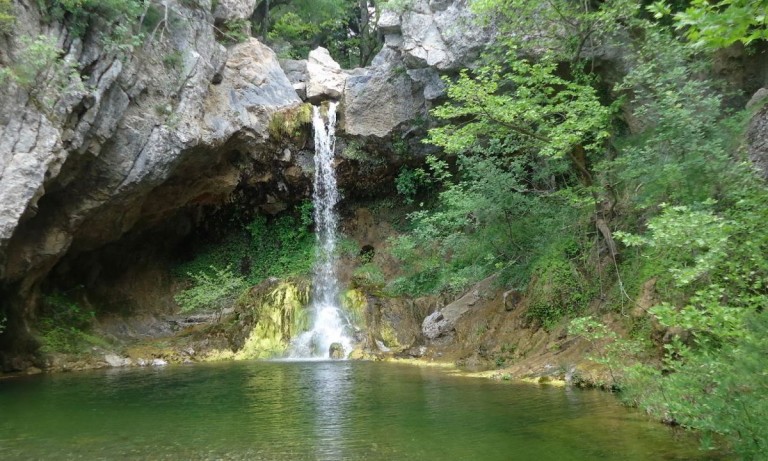
In this museum have been collected fossils dating from 6,500,000 up to nine million years of the 24 different species of animals found in the area Kerassia the last 50 years.
You will see fossils, skeletons and relevant photos from mammals of the paleontological era as machairodontes, which should look like lions, Elladothiria similar to giraffes but with low neck and skulls from Rhino. A very sophisticated and unique museum ,worth visiting.
Opening hours: 10:00-14:00 & 17:00-20:00, except Monday and Thursday.
Contact Phone: (+30) 22270 98254
More information on http://www.kerasiamuseum.gr
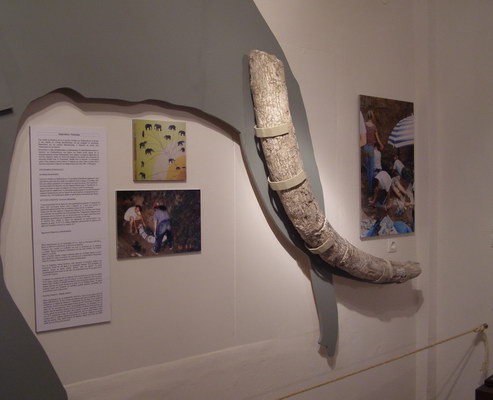
This is one of the most beautiful and richest museums in Evοia. The space and its exhibits are a vivid expression of the folklore traditions of the area. It is lodged at a two- floor building situated at the historical center. In the ground floor room, the archeological collection of Limni is exhibited, and contains pots, a coin collection, architectural members, and burial inscriptions of the classical, Hellenistic and Roman period.
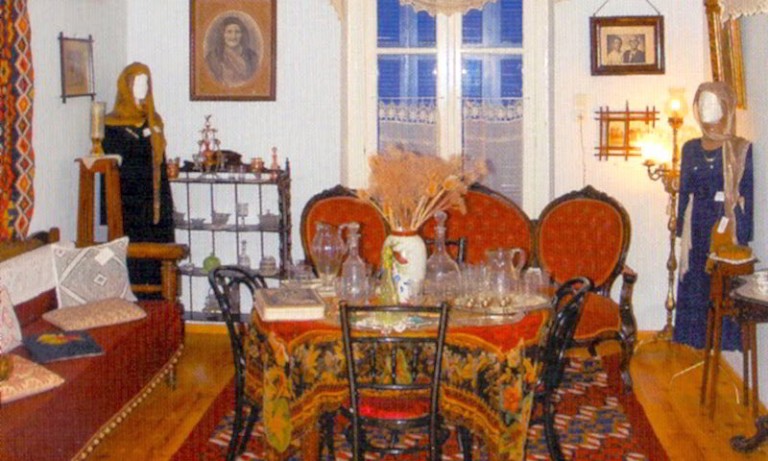
It is a Byzantine female convent in the foothills of Mount Kandili, 9 km east of Limni. Through the lush landscape, a coastal asphalt road leads directly to the monastery, where dominates the defensive tower modeled on Mount Athos monasteries. It was built in the 7th century on a hill 200 meters above the sea, on the foundations of the ancient Greek temple of Poseidon. The monastery was destroyed several times by the raids of the Franks and Turks, who once killed all the monks. After the disaster, a captain originating from Galata Asia Minor (Istanbul), restored the monastery. From there comes the current name. The Monastery celebrates on May 20 and December 6.
It is a postbyzantine male monastery (16th c.) that was founded on Mount Kavallaris by Saint David, located about 15 minutes north of Rovies.
The Saint David himself built there in the temple, the foundations of the old church which was destroyed by the Turks in 1470. The monastery was destroyed again by the Turks and was finally reconstructed in 1877. There are kept the miraculous relics of Saint David, his stole and incense burner.
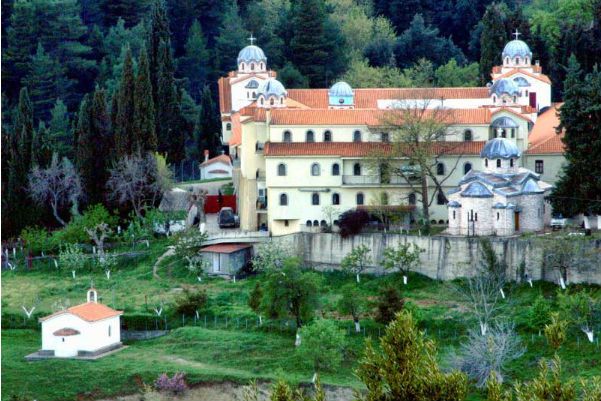
It is a modern female monastery, which is built in a beautiful location very close to the road Limnis- Rovion- Aidypsos, just 5 minutes from the guesthouse.
This post-Byzantine convent, located 13 km. From Aidypsos, above the village of Ilia in North Evia.
It is located in community Prokopi in the fertile green valley of river Kireas. The church is tall, with large marble columns inside. The huge paintings depict dark colors, important moments of Christianity. Saint John the Russian died in 1730, his relics are kept in a marble shrine and constitute one of the greatest shrines of the Orthodox Christians of Greece. On May 27, celebrated a festival while many believers arrive on foot from the nearby villages to worship.
It is a cavernous chapel at the western end of the waterfront of Limni, where according to tradition lived the founder of the famous Monastery of St. John the Theologian in Patmos, Saint Christodoulos.